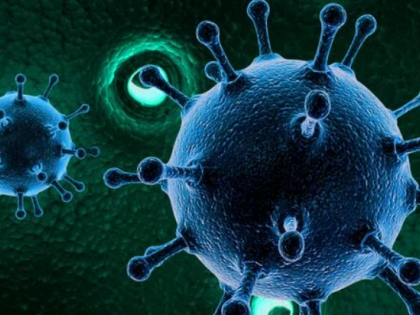India Reports 22 Cases of COVID-19 Sub-Variant JN.1 With Mild Symptoms
By Lokmat English Desk | Updated: December 22, 2023 19:39 IST2023-12-22T19:38:59+5:302023-12-22T19:39:28+5:30
As of Thursday, twenty-two cases of the COVID-19 sub-variant JN.1 have been identified in the country, with 21 cases ...

India Reports 22 Cases of COVID-19 Sub-Variant JN.1 With Mild Symptoms
As of Thursday, twenty-two cases of the COVID-19 sub-variant JN.1 have been identified in the country, with 21 cases reported in Goa and one in Kerala, according to official sources. In Goa, where cases of the JN.1 variant were reported, Press Trust of India sources indicated that there was no clustering of cases, and all infected individuals have recovered without complications. These individuals experienced mild upper respiratory tract infection symptoms, including a mild dry cough, and sore throat, with or without fever, as reported by Press Trust of India. In November, 62 samples were sent to various INSACOG labs for whole-genome sequencing to detect the JN.1 variant. In December, 253 samples have been sent so far, according to sources from Press Trust of India. An official source confirmed to news agency PTI, "A total of 22 cases of the JN.1 variant have been reported till December 21 in the country."
The case in Kerala involved a 79-year-old woman who has since recovered without complications. The woman exhibited mild symptoms and was the first case of JN.1 detected in India on December 8. NITI Aayog member (Health) Dr. V K Paul, on Monday, emphasized that the scientific community in India is closely investigating the new variant. He stressed the need for states to increase testing and strengthen surveillance systems. Despite the rising number of cases and the detection of the JN.1 sub-variant in the country, officials stated that there is no immediate cause for concern. This is because 92% of those infected are opting for home-based treatment, indicating mild illness. Additionally, there has been no increase in hospitalization rates, and COVID-19 is considered an incidental finding in people hospitalized for other medical conditions.
In a letter addressed to states and union territories on Monday, Union Health Secretary Sudhansh Pant underlined critical COVID-19 control and management strategies, especially considering the upcoming festive season. He advised them to implement requisite public health measures to minimize the risk of an increase in disease transmission. States have been urged to ensure effective compliance with the detailed operational guidelines for the revised surveillance strategy for COVID-19 shared by the Union Ministry of Health and Family Welfare. They are also asked to monitor and report district-wise cases of Influenza-like Illness (ILI) and Severe Acute Respiratory Illness (SARI) in all health facilities regularly to detect rising trends early.
India reported a single-day rise of 640 fresh COVID-19 infections on Friday, with the number of active cases increasing to 2,997 from 2,669 the previous day, according to Union health ministry data. The death count reached 5,33,328, with one additional fatality reported from Kerala, as stated in the data updated at 8 am. The JN.1 (BA.2.86.1.1), which emerged in August in Luxembourg, is a descendant of the BA.2.86 lineage (Pirola) of SARS COV2. Countries reporting the largest proportion of JN.1 sequences include France (20.1%, 1552 sequences), the USA (14.2%, 1072 sequences), Singapore (12.4%, 934 sequences), Canada (6.8%, 512 sequences), the UK (5.6%, 422 sequences), and Sweden (5.0%, 381 sequences).
Open in app